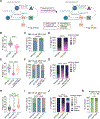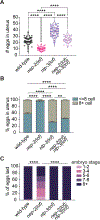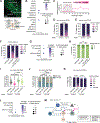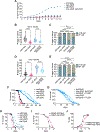Neuropeptide inactivation regulates egg-laying behavior to influence reproductive health in Caenorhabditis elegans
- PMID: 39395417
- PMCID: PMC12009563
- DOI: 10.1016/j.cub.2024.09.059
Neuropeptide inactivation regulates egg-laying behavior to influence reproductive health in Caenorhabditis elegans
Abstract
Neural communication requires both fast-acting neurotransmitters and neuromodulators that function on slower timescales to communicate. Endogenous bioactive peptides, often called "neuropeptides," comprise the largest and most diverse class of neuromodulators that mediate crosstalk between the brain and peripheral tissues to regulate physiology and behaviors conserved across the animal kingdom. Neuropeptide signaling can be terminated through receptor binding and internalization or degradation by extracellular enzymes called neuropeptidases. Inactivation by neuropeptidases can shape the dynamics of signaling in vivo by specifying both the duration of signaling and the anatomic path neuropeptides can travel before they are degraded. For most neuropeptides, the identity of the relevant inactivating peptidase(s) is unknown. Here, we established a screening platform in C. elegans utilizing mass spectrometry-based peptidomics to discover neuropeptidases and simultaneously profile the in vivo specificity of these enzymes against each of more than 250 endogenous peptides. We identified NEP-2, a worm ortholog of the mammalian peptidase neprilysin-2, and demonstrated that it regulates specific neuropeptides, including those in the egg-laying circuit. We found that NEP-2 is required in muscle cells to regulate signals from neurons to modulate both behavior and health in the reproductive system. Taken together, our results demonstrate that peptidases, which are an important node of regulation in neuropeptide signaling, affect the dynamics of signaling to impact behavior, physiology, and aging.
Keywords: C. elegans; aging; behavior; egg laying; healthspan; matricide; neural circuit; neuropeptidase; neuropeptide; reproductive aging.
Copyright © 2024 Elsevier Inc. All rights reserved.
Conflict of interest statement
Declaration of interests The authors declare no competing interests.
Figures





References
-
- Mains RE, and Eipper BA (1999). The Neuropeptides (Lippincott-Raven).
MeSH terms
Substances
Grants and funding
LinkOut - more resources
Full Text Sources
Research Materials

